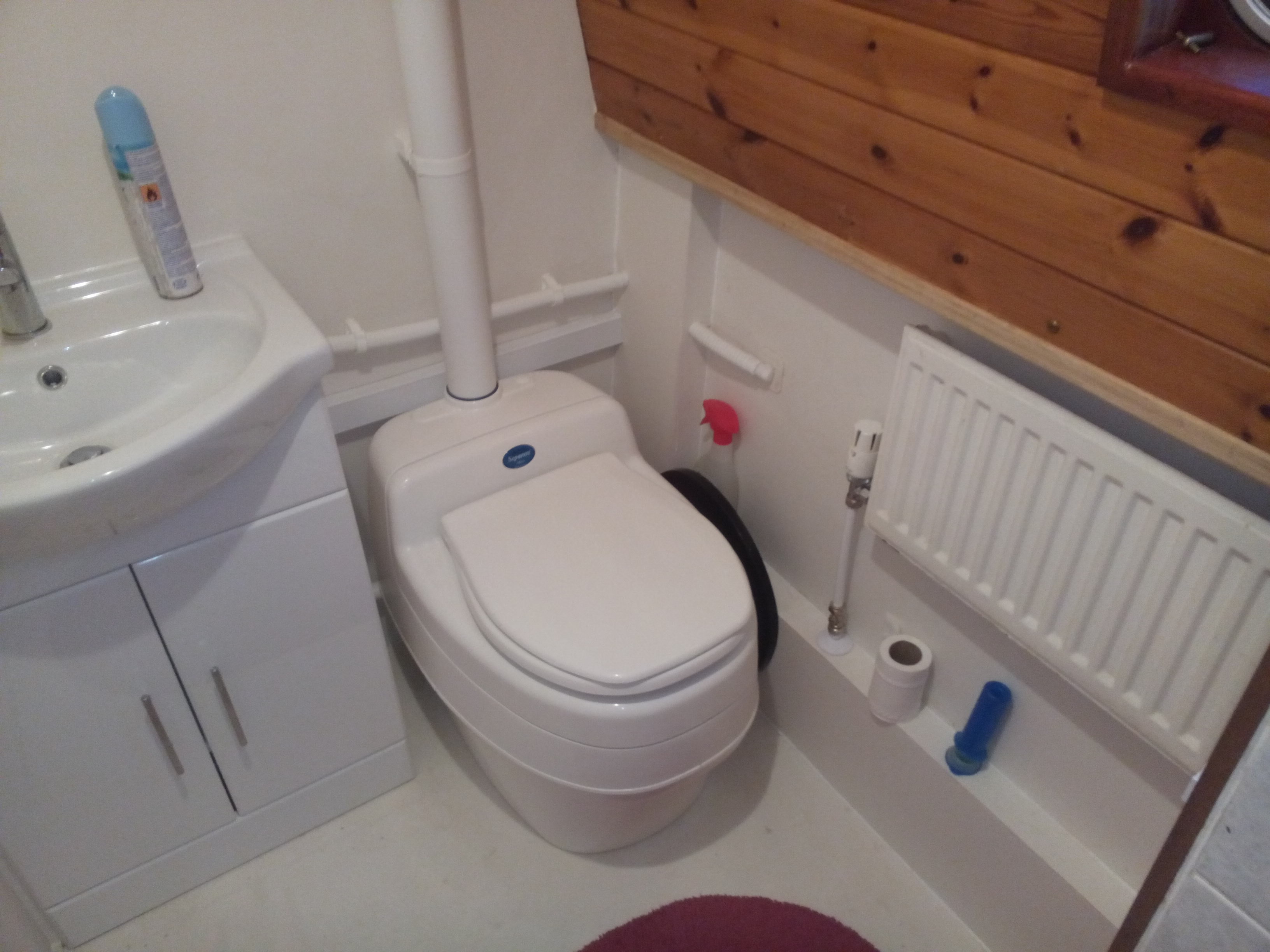Composting Toilet
Pump Out Toilet
The boat was originally equiped with a conventional "dump thru" toilet and holding tank commonly known as a "pump out" system. This system was the standard when the boat was built, but things have moved on.
The Pump out system requires emptying every few weeks, either becuase it is full, or in warm weather it becomes impossible to live with. Emptying the tank requires visiting a Pump out station and paying between £10 and £20 to have the tank contents pumped out, over a year this mounts up.
On occasions we have gone for days without a working toilet when the tank is full and there are no working, open pump out stations availiable. There have also been occasions when the toilet valve has stuck open resulting in the tank filling up and then overflowing with "dirty" water running through the boat and accumulating in the bilge.
The toilet unit itself was 20 years old and although it has been maintained and had many items replaced (seals etc) it was starting to show its age.
After the toilet was removed the tank was filled with 100Kg of post mix cement to bind any solids in plast and improve the ballasting of the boat.
Composting Toilets
 There is a new generation of "Composting toilets" on the market which rely on seperating the liquid and solid wastes and dealing with them seperatly, these are known as "Seperating toliets" and although people refer to them as composting toilets in most cases they do little to compost the waste.
There is a new generation of "Composting toilets" on the market which rely on seperating the liquid and solid wastes and dealing with them seperatly, these are known as "Seperating toliets" and although people refer to them as composting toilets in most cases they do little to compost the waste.
After looking at a number of options I settled on the Separett Villa toilet from Sweden.
This toilet has a large bin for solid waste and some clever plumbing to direct the liquid in to a seperate removable holding tank. As the liquid is sterile it can be disposed off into an elsan point, down a toilet, or in an emergency under a hedge. CRT are not keen on it being disposed directly in to the canal due to the high nitrate content which could contribute to algal blooms.
The Solid waste bucket should be good for around 4-10 "person weeks" usage so would need emptying around once a week with a full crew, but normally less often. The toilet comes with 3 buckets so in theory we could go for a month or more without the need to off load the contents. The solids are dried out by the seperation from the liquid waste and a permanently running fan which draws air over the bucket. This reduces the volume and weight of the solids and eventualy will allow them to compost aerobically. Any smells are drawn out by the fan, and areobic digestion is intrinsically less smelly than the an-aerobic digestion which ocures in holding and septic tanks.
The result is an easy to use system, with no smell, no water use and no smelly tank to empty.
Emptying the liquid tank is a 5 min job when ever we pass an elsan or service block. The full Solids bin is lined with a suitable bin liner which is bagged up and can be emptied in to the normal waste bin when ever we pass a rubbish point.
The new toilet has been fitted to the boat for some weeks now and been used for a number of weekend and short breaks, with the solids bin and liquid container being emptied after each vist. This has worked well and is certainly less of an issue then taking the boat to the service wharf for a £12 pump out. It will be interesting to see how the system operates under full load.
Hits: 11770

